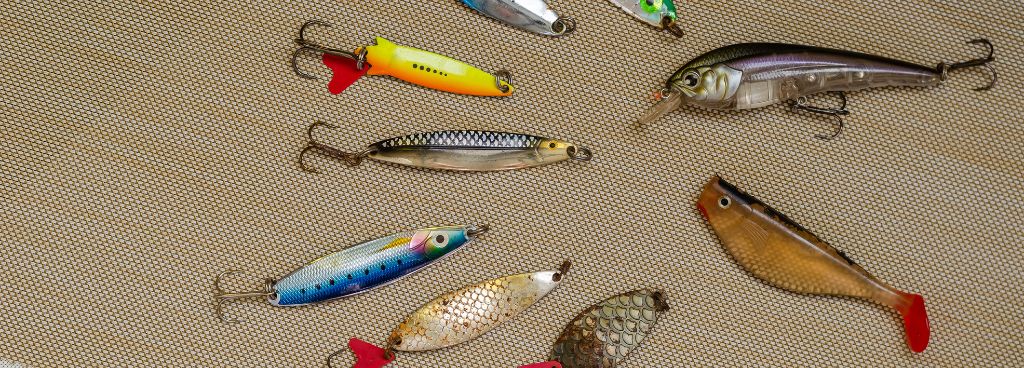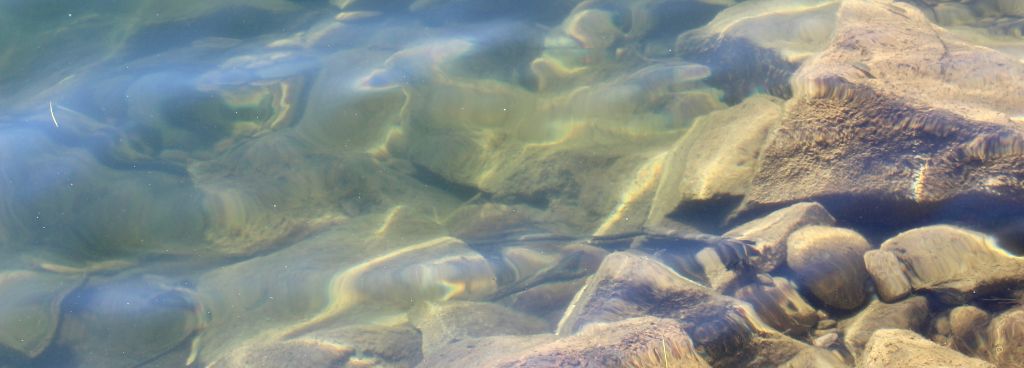Stories Worth Reeling In...
Last Updated on September 22, 2023
Topwater fishing is more than just a fishing technique—it’s an art form. It involves skillful presentation and a deep understanding of bass behavior. By enticing bass to strike at lures skimming across the water’s surface, anglers can witness some of the most exhilarating moments in fishing. The explosive surface strikes and heart-stopping battles make topwater fishing a favorite among seasoned anglers and novices alike.
From the best times to employ this technique to the factors that influence its effectiveness, this post equips you with the knowledge to take your bass fishing game to new heights. So, grab your favorite topwater lures, prepare for some heart-stopping action, and get ready to reel in those lunkers!
Table of Contents
Before we dive deeper into the world of topwater fishing for bass, let’s take a moment to explore the incredible variety of lures available. From buzz baits and poppers to frogs and walking baits, each type of topwater lure brings its own unique action and appeal.
To truly master topwater fishing for bass, it’s essential to grasp the behavior and feeding patterns of these elusive predators. Bass are notorious for their aggression and willingness to strike at prey on or near the water’s surface. They often target vulnerable creatures such as frogs, insects, and baitfish that unwittingly find themselves in their territory. By mimicking the movements and appearance of these natural prey items, topwater lures can trigger powerful instinctive strikes from bass.
When it comes to bass fishing, the advantages of utilizing topwater lures are numerous. Firstly, topwater lures excel in drawing strikes from aggressive and actively feeding bass. The surface disturbance created by these lures generates attention and provokes the predator instinct of bass, making them more likely to attack.
Topwater fishing allows you to target shallow areas, including weed beds, lily pads, and submerged structures, where bass often patrol in search of an easy meal. This gives you a strategic advantage and the opportunity to catch bass in areas that may be inaccessible with other techniques.
White is an excellent topwater color for practically any situation, but it is especially effective on cloudy or low-light days.

In the early morning and late evening hours, bass are often more active and feed near the water’s surface. These prime feeding times coincide with low light conditions, creating the perfect opportunity to unleash your topwater lures. The reduced visibility encourages bass to rely on their heightened senses, making them more susceptible to striking at surface baits. Keep an eye out for surface activity such as splashes and ripples, as these signs indicate bass actively feeding and ready to pounce on your topwater offerings.
When faced with calm and clear water conditions, bass becomes more reliant on their vision to locate and ambush prey. This is where topwater lures truly shine. The natural action and enticing presentation of these lures can elicit explosive strikes from bass that are visually scanning the water’s surface. Take advantage of the clear water by selecting baits that closely resemble the prey species in the area, allowing the bass to home in on the target and strike with precision.
As the water temperature rises during the warmer months, bass activity levels soar, and their aggression intensifies. This makes it an ideal time to unleash topwater lures and capitalize on the bass’ heightened appetite. With increased metabolism, the bass is more willing to chase down and strike at fast-moving topwater baits. Experiment with techniques such as “walking the dog” or “popping” to mimic the frantic movements of vulnerable prey, triggering instinctual responses from the bass.
Vegetation and structure provide bass with both cover and an abundant food source. Topwater lures excel in these areas, allowing you to entice bass hiding among the weeds or lurking near submerged structures. Work your topwater lures along the edges of vegetation, skipping them over lily pads or weed mats, and pausing near structure to tempt bass into striking. The surface disturbance created by these lures often triggers a predatory response, enticing bass to attack with ferocity.
The weather plays a crucial role in the success of your topwater lure fishing. Factors such as wind, cloud cover, and temperature can significantly impact bass behavior and their willingness to strike at surface baits. Wind can create surface disturbances and break up the water’s surface, making it an ideal time to use topwater lures. Cloud cover can provide shade and reduce the visibility of the lures, making them appear more natural to the bass. Additionally, warmer temperatures can increase bass activity levels, making them more receptive to topwater presentations. Pay attention to these weather elements and adjust your bass fishing strategies accordingly.
The activity level of bass can vary throughout the day and under different conditions. Observing bass behavior is essential in determining whether topwater lures are appropriate. Look for signs of bass actively feeding or chasing baitfish near the surface. If the bass is exhibiting aggressive behavior, such as surface explosions or chasing, it’s a good indication that they are actively feeding and are more likely to strike at topwater lures. However, if the bass seems lethargic or inactive, it may be more effective to switch to alternative techniques. Stay observant and adapt your approach based on the activity level of the bass.

Water clarity plays a vital role in the visibility and effectiveness of topwater lures. In clear water, bass rely heavily on their vision to locate prey near the surface. Opt for lures that closely resemble the local forage and have realistic color patterns. In murky or stained water, consider using lures with larger profiles and increased noise or vibration to compensate for reduced visibility. Experiment with different lure styles and colors to find what works best in specific water clarity conditions. Adapting your lure selection and presentation to match the water clarity will greatly improve your chances of enticing bass to strike.
When it comes to topwater bass fishing, selecting the right lure and presenting it effectively is key to enticing strikes. In calm water or during low light conditions, opt for subtle and quieter lures that mimic injured baitfish. When bass is more active or in aggressive feeding modes, try using louder and more aggressive lures that create a commotion on the surface. Vary your retrieve speed and experiment with pauses and twitches to imitate natural movement and trigger strikes. Remember, matching the lure to the conditions and presenting it with finesse can make all the difference.
Successful topwater bass fishing requires patience and keen observation. Take the time to assess the water conditions, including the presence of baitfish, surface activity, and any visible cover. Look for signs of bass feeding, such as swirls, splashes, or ripples, which can indicate their location and preferred feeding areas. Observe the behavior of the bass and adjust your approach accordingly. Sometimes, a subtle change in retrieve speed or a slight variation in lure presentation can make a significant impact on your success.
Topwater bass fishing is as much an art as it is a science. While expert advice and tips can be valuable, nothing beats learning from your own experiences on the water. Every fishing trip presents an opportunity to gain insights and refine your techniques. Pay attention to what works and what doesn’t. Keep a record of successful lure choices, retrieve styles, and specific conditions that yielded positive results. Don’t be afraid to experiment and try new approaches. What works in one location may not work in another, so adaptability is key. By continually learning and building upon your experiences, you’ll become a more skilled and successful topwater bass angler.
Now it’s time to put your newfound knowledge into action and experience the thrill of topwater fishing for bass firsthand. Apply the tips and techniques discussed in this blog post, but also remember to trust your instincts and learn from your own experiences on the water. The world of topwater bass fishing offers endless excitement and the opportunity to create unforgettable memories. So grab your gear, head to your favorite fishing spot, and immerse yourself in the exhilarating world of topwater fishing for bass. Happy angling!